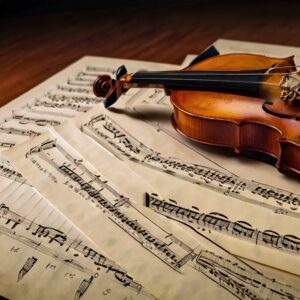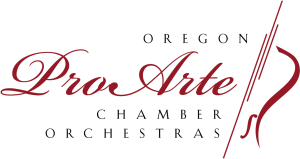Classical music experiences unique challenges in the contemporary business landscape. Far from just being a cultural artifact, classical music represents a substantial industry comprising individual artists, orchestras, opera houses, recording companies, and various support roles. Understanding its economic dimensions reveals a sector striving to maintain relevance and financial stability amidst shifting modern tastes and economic conditions.
The Financial Challenges Faced by Orchestras and Opera Houses

Both orchestras and opera houses represent significant investments in classical music. They are cultural icons and heavy financial undertakings. Maintaining an orchestra or opera house involves costs that stretch from salaries for musicians and technical staff to venue maintenance and marketing. One of the primary issues is the high cost of operation relative to income. Ticket sales alone typically cannot cover costs, making these institutions heavily reliant on additional funding sources.
The variability of funding creates a precarious financial situation for many classical music entities. For example, orchestras in the United States rely heavily on donations and endowments, which can fluctuate with the economic climate. European orchestras often receive more substantial public funding, yet even these are subject to government budget cuts.
Opera houses face additional challenges. Operas require musicians and a large supporting cast including directors, costume designers, and set designers, among others. The production costs for staging an opera are correspondingly higher, and hence the financial risk is greater.
The Impact of Funding, Sponsorships, and Public Grants
Funding is the lifeblood of classical music institutions. It comes from three main sources: ticket sales, private donations, and public funding. Each of these has its own set of challenges and impacts on the operation and scope of classical music performances.
Ticket sales rarely cover more than a fraction of the costs of running an orchestra or opera house. This reliance on box office income makes classical music groups sensitive to changes in audience numbers which can be influenced by everything from local economic conditions to competing entertainment forms.
Private donations and sponsorships can provide substantial support, but they come with their own set of challenges. Donations can be unpredictable, and sponsorship comes with expectations. Sponsors may expect concessions such as advertising or influence over programming, which can sway artistic integrity.
Public grants have traditionally played a role in supporting classical music. Tese are often subject to political changes and economic austerity measures. The uncertainty of government budgets means that many institutions face unpredictable future funding levels, complicating long-term planning.
Adapting to Economic Pressures through Innovation
Classical music institutions have been finding innovative ways to deal with economic pressures. These adaptations are crucial for their survival and relevance in a rapidly changing cultural landscape.
One strategic approach has been to broaden their audience. Many orchestras and opera houses have begun to diversify their programming to include traditional pieces and contemporary works and cross-genre collaborations which may attract a younger or more diverse audience.
Technology also offers new avenues for engagement. High-quality live streaming of concerts and operas can reach global audiences. Apps and virtual reality experiences can enhance the audience’s understanding and enjoyment of the music, making it more accessible to those without a deep background in classical music.
Educational outreach is another vital strategy. By engaging with schools and community groups, classical music institutions can build a foundation of appreciation among young people. These initiatives help to educate and can also foster a new generation of enthusiasts and patrons.
New funding models are also emerging. Some institutions have adopted a tiered membership system offering different levels of benefits to donors. Crowdfunding for specific projects or performances has also gained traction as a way to engage with a broader base of smaller-scale donors.
Efficient Operational Practices
The classical music industry, recognizing the evolving landscape of cultural consumption and financial management, is increasingly incorporating sophisticated business models that prioritize both economic viability and environmental responsibility. Within this framework, many classical music organizations have begun implementing advanced, energy-efficient measures such as LED lighting, temperature optimization through smart thermostats, and even solar panels to power opera houses and concert venues. These modernization efforts significantly reduce utility costs and lower the carbon footprint of these historically significant cultural venues.
The industry is seeing a transformative change in workforce utilization. By cultivating a staff of multi-skilled professionals, organizations are able to streamline operations effectively. This approach often includes cross-training employees to handle tasks ranging from event management and customer service to technical support and marketing. This enhances operational agility and fosters a more engaged and versatile team, capable of stepping into various roles as needed, which can be crucial in times of budget constraints or unexpected shifts in scheduling.
These institutions are adopting innovative financial strategies such as dynamic pricing models for ticket sales, which adjust prices based on demand, time of purchase, and seat location, similar to airline pricing strategies. Such financial innovations help maximize revenue while maintaining accessibility for a broader audience.
Through partnerships with local businesses and implementation of digital platforms for streaming performances, classical music organizations are broadening their audience reach and generating new revenue streams. These online offerings allow enthusiasts who cannot attend live performances, whether due to geographical distance or physical limitations, to experience concerts virtually, thereby expanding the demographic base and fostering a global community of classical music lovers.
These multifaceted operational and financial strategies ensure the survival of classical music institutions and enhance their capability to thrive in a competitive cultural marketplace, ensuring they continue to enrich cultural landscapes worldwide while staying financially and environmentally sound.
